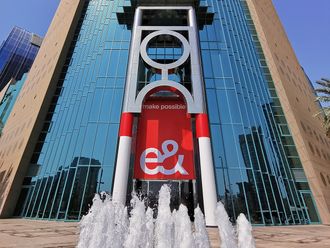Dubai: Hema, a middle income Indian expat in the UAE, jumped with happiness when rupee hit a record low last year. She repatriated Dh200,000 to India and cleared off her home loan, bought a new flat in India’s Silicon Valley, Bangalore and deposited the rest of the amount in a government bank for a little less than 10 per cent in a fixed deposit scheme.
“When the rupee fell, I took a personal loan locally, made use of the interest rate arbitrage and the record deprecation to the fullest extent possible and I paid off my home loan in India, for which I was paying 13 per cent,” said Hema, a Sharjah-based bank employee.
But she is not too enthused with the current fall in the rupee. “Last year was a once in a lifetime opportunity for me. I did many investments in one go as we’d a good 3 months to react. But now the depreciation has been quick, but people say the currency would recover very fast unlike last time,” said Hema, who didn’t wish to disclose her last name.
Like Hema, many Indian expats in the UAE are not as excited with the current weakness in the rupee compared to the third quarter of last year.
Market participants feel that the current depreciation in the rupee would not last long and is likely to recover early next year, when the stalled reforms process restarts and brings back billions of dollars in capital flows.
UAE’s outbound remittance to India is about $16 billion per annum; UAE-India is the second biggest corridor after US and Mexico. The peak remittance was at $96 million in August last year compared to $80 million now.
“There was an excitement last time around when it was the talk of the town, with people asking if rupee would reach 20 rupees? But expats are not as excited like last 2013,” said Pardeep Unni, senior relationship manager, Richcomm Global Services. “There were a lot enquiries in banks, people were taking personal loans to send money home. But that’s not the case now. People brought property, did FDs, but we haven’t seen that much of excitement,” said Unni.
Currently the remittances have jumped 60-70 per cent, according to industry executives.
“Till recently rupee was holding on to the level of 62, but since the last few days it has witnessed a lot of depreciation. So, whenever there is depreciation in rupee, there is always a tendency among people especially the high net worth customers to unlock the money that they are holding. It does make a difference for white collar segment, which have high disposable income,” said, Sudhesh Giriyan, Vice President and Business head, Xpress Money.
“There is a phenomenon where banks give loans with lucrative interest. This something that we saw in third quarter of last year, we saw loads of money going back to India,” said Giriyan.
Expats got 17.69 rupees for a dihram on Thursday, as against 18.73 rupees in August 2013, after which it traded in the range of 16.50-17 from October 2013 till date.
Appreciation next year
The rupee might appreciate next year as restart of reform process is likely to attract foreign capital.
“I don’t expect rupee to fall below 64 this year, it should top out. I think it would come back to 60 levels because oil is low,” Ashwin Shetty, vice president treasury, UAE Exchange told Gulf News.
“That moment of 2013 can come, when United States start increasing the rates, at that time rupee could move to 65 levels,” Shetty said.
UAE exchange’s average volume in 2013 was at $24 million, as against the current volume of $20 million. Current weakness is only temporary, but last year the rupee weakened continuously, so that gave them the more time, Shetty said.
Unni from Richcomm Global also agreed.
“Current weakness in the rupee may not sustain in 2015, and rupee may see a stronger rupee given more fund flows. Current weakness is due to fund outflow due to year-end profit taking,” said Unni.
About 80 per cent of the 8.3 million people who live in the UAE are foreigners, including workers from the Indian subcontinent, the Philippines and Europe. Remittances from the Gulf country, which holds about 6 per cent of the world’s proven oil reserves, rose 9.5 per cent to Dh45.1 billion ($12.3 billion) last year, according to data on the central bank website.
India topped the recipients of remittances among developing nations in 2013. They contribute most of the remittances from the Gulf to India, which are estimated at 50 per cent of around $71 billion (Dh260.79 billion) of total remittances India received in 2013.












